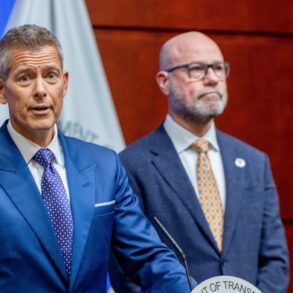On May 30, 2025, the U.S. Supreme Court made a landmark decision, allowing the Trump administration to revoke temporary legal status for over 500,000 immigrants from Cuba, Haiti, Nicaragua, and Venezuela. This ruling lifts a lower court’s block on President Donald Trump’s plan to end a Biden-era program known as humanitarian parole, which had granted these migrants permission to live and work in the United States temporarily. Now, these individuals face the risk of deportation, a move that could dramatically reshape their lives and the nation’s immigration landscape.
What Was the Humanitarian Parole Program?
During the Biden administration, more than 500,000 migrants from these four countries—plagued by violence, political unrest, and natural disasters—were given temporary legal status through a process called humanitarian parole. This program allowed them to stay in the U.S. for up to two years, offering a lifeline to escape dangerous conditions in their home countries. For many, it meant a chance to build a new life, find jobs, and support their families. But President Trump, who campaigned on a promise to crack down on immigration, moved quickly to dismantle this policy upon taking office.
The Supreme Court’s Decision
The Supreme Court’s ruling came after the Trump administration asked the justices to overturn a federal judge’s order that had temporarily kept the protections in place. In an unsigned decision, the court sided with the administration, clearing the way for the termination of these migrants’ legal status while an appeal is still pending. Justices Ketanji Brown Jackson and Sonia Sotomayor strongly disagreed, with Jackson writing in a dissent that the majority “has plainly botched” the decision, warning of the “devastating consequences” for nearly half a million people whose lives could be upended.
This isn’t the only immigration case the court has addressed recently. In a separate ruling, the justices also allowed the administration to revoke temporary protections for about 350,000 Venezuelan migrants. Together, these decisions could expose nearly 1 million people to deportation, aligning with Trump’s campaign pledge to ramp up removals and reverse Biden’s immigration policies.
Why It Matters
For the 530,000 migrants affected, the stakes couldn’t be higher. Many fled dire situations—war, poverty, or persecution—in their home countries. Losing legal status means they could be forced to return to places where their safety and livelihoods are at risk. Families could be torn apart, jobs lost, and communities disrupted. Critics of the ruling, like Justices Jackson and Sotomayor, argue that the government is moving too fast, stripping away protections without giving these migrants enough time to fight their cases in court.
On the other hand, supporters of the decision, including the Trump administration, say it’s a necessary step to control immigration and prioritize national interests. They argue that the Biden-era program was too lenient, allowing large numbers of people to stay without a clear path to permanent residency.
What’s Next?
The Supreme Court’s order doesn’t end the legal battle. An appeals court will still review the case, and the justices might take it up again later. For now, though, the Trump administration can start the process of removing these migrants’ protections, potentially speeding up deportations. The Department of Homeland Security is already under pressure to increase the pace of removals, and this ruling could bring the total number of people at risk of deportation to nearly 1 million.
This decision marks a major win for President Trump, who has made immigration a cornerstone of his agenda. But for the hundreds of thousands of migrants affected, it’s a moment of uncertainty and fear. As the nation watches, the debate over immigration—balancing security, law, and compassion—remains as heated as ever.








